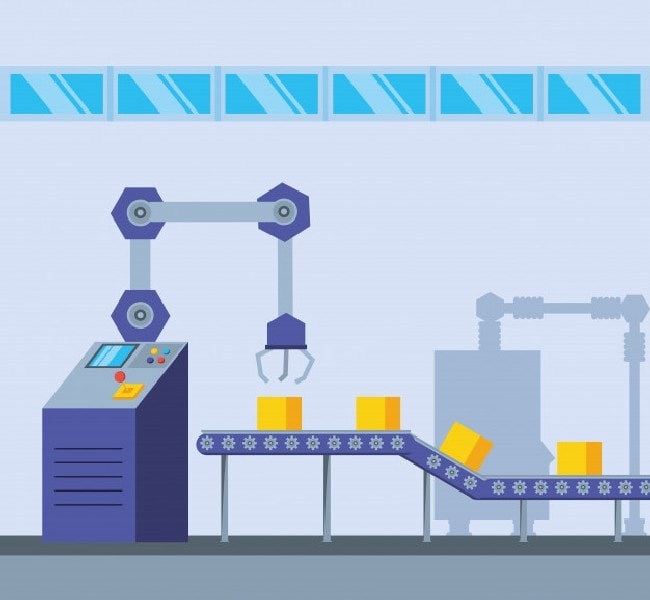The principles of scientific management can be attributed to a mechanical engineer named Frederick Taylor who devised ways to perform work efficiently. Frederick Taylor was a mechanical engineer in a steel corporation in Philadelphia.
He often thought about how a task could be performed more efficiently which led him to study human labour and analyze the work of the workers on the floor. The resulting studies give birth to time studies, activity analysis and methodology studies which can be stated as the start of Taylorism.
Table of Contents
History of Scientific Management by Frederick Taylor
Frederick Taylor published the principles of scientific management in the year 1909 in which he proposed optimization and simplification of jobs which would lead to an increase in productivity. He also professed the idea that managers and workers need to get along with each other so that productivity would multiply drastically. This was extremely different from the way business was conducted before this.
The factory manager had no contact with the workers at the time and the workers were the left on their own in order to produce the product. Work standardization was absent and the primary motivation of workers was to have continued employment because there was an absence of any incentive to the work.
It was Taylor who thought that money is the primary motivation for all workers which is why he came up with the idea of a fair day’s pay for a fair day’s work. In other words, the worker will not be paid enough if you did not achieve as much as the other worker who is considered to be highly productive.
Because Taylor was a mechanical engineer he was very much interested in work efficiency. He did many experiments in his workplace while working with US Steel manufacturers. Experiments with a shovel that could help the workers work for several hours straight or bricklayers in which experimented with various motions and developed an efficient way to lay the bricks are very popular.
Taylor also helped in time and motion studies which came to the conclusion that few people worked more efficiently and better than others. These are the people that should be hired by the managers which are why selecting the right person for the right job became another important part which led to the development of workplace efficiency.
All of these studies of Taylor lead to developing four basic principles of scientific management. These principles are also termed as Taylorism.
Principles of scientific management
Following four principles of Taylor’s scientific management:
1) Science over tradition:
Taylor proposed to replace the working habit by rules of thumb or common sense with the scientific method in order to study the work and also to determine the probability most efficient way in order to perform specific tasks.
2) Worker job match:
Rather than randomly assigning any worker with any job that should be a match of worker with the jobs which should be based on their motivation and capability this should be trained to work at their maximum efficiency.
3) Supervising:
The work performance of the workers should be monitored often and instructions should be provided to them along with supervision so that it increases the efficiency of working.
4) Work delegation:
Allocate the work between the workers and their managers so that the workers can perform efficiently and the managers can use the time in order to plan and train accordingly.
Meaning and explanation | Scientific Management
1) Science over tradition
It is a common fact that a period of time some rules that workout in an organization or factory become rules of thumb for that particular problem. Although it may not be a proper solution, the mere fact that it worked out for the particular problem, at that particular time, makes it eligible to be called as a solution and that solution is applied time and time again for the same problem every time.
Thus, solving that problem becomes a rule of thumb rather than solving it scientifically and properly. This habit or common sense is not a method equal solution for the problem which is what was suggested by Frederick Taylor.
He suggested using the proper scientific method in order to study the work. We also suggested finding the most efficient way in which the tasks can be performed so that the efficiency is increased in this amount of time rather than continuing the work with traditional ways.
2) Worker job match
Previously it was seen that in an organization or factory any worker was assigned with any job. The only fact that the worker was ready to perform a job was sufficient to determine his ability. It was not checked and seen whether the worker is fit for the particular job physically, mentally or even his abilities to perform at his work.
Taylor proposed that the workers should be matched on the skills to the respective jobs. This would not only provide a boost to the efficiency of the work but also make the workers more skilful. Due to the perfect job match, motivation levels are high and workers are satisfied with their work.
3) Supervising
Previously it so happened that there was very little connection between workers and their managers. The managers briefed the workers about their work but never interacted with them during their work.
The managers thought themselves too superior to workers to interact with them. They also thought that interacting with workers could make them as efficient as it can cause an interruption in their work. Taylor proposed that the managers should monitor the performance of the work of their employees and provide inputs from time to time.
The managers should provide instructions relating to the work of the workers and they should supervisor them in order to ensure the productivity of the workers increases. Time and time again the workers need to be given input from the managers so that there is fine-tuning in the output from the workers.
4) Work Delegation
Although the concept of delegation of authority arrived much later Taylor is credited with forming the base of work delegation. Taylor proposed that work should be allocated between workers and their managers.
Educating the work please help the managers to spend their time focusing more on training and planning the workers and this, in turn, will allow the workers to perform better and the tasks will be completed more efficiently thereby allowing the work to prosper and progress.
Techniques of scientific management
There are 6 different techniques of scientific management which are as follows:
1. Functional foremanship
Taylor promoted the idea of the functional organization which is based on the specialization principle and makes complete utilization of various experts and their expertise. Every expert is assigned a small part of the work which is divided into several smaller parts.
The primary Idea behind is proposing the functional organization was that each man should have as many functions as possible to perform so that there is an increase in the efficiency of the work thereby reducing the time taken to understand and learn the work.
He also proposed that if possible every man should be made to work only on a single type of a function which will increase his output and reduce the time.
Taylor further suggested that the division of the work of factory manager should be made into two sub-departments:
A) Planning department
B) Production department
There should be four experts in each department and this should help the department to do the function more efficiently.
A) Planning department specialists
1) Route clerk
The routes and show that there is the sequencing of a particular work and ensures that the work passes through all the stages before it is been finalized. He is also the person responsible who decides which job should be done and where it is to be done.
2) Instruction Card Clerk
This person is responsible for preparing instruction cards and handing them over to the team leaders of the bosses of the particular teams. These cards carry information about the nature of the work along with the standard procedure of performing it and the materials that are necessary along with the details about the machinery that is being used for the work.
3) Time and Cost Clerk
Is the person who is responsible for deciding when a particular job is to be begun and when is it to be finished. He is also the person who decides how much time will it take me and the cost at which the work will be produced.
4) Discipline officer
Is the person who ensures that all of the work that is allocated to the workers is performed in a disciplined manner.
B) Production department specialists
1) Gang bosses
From the point of view of control, the workers are divided into two categories. A team leader is elected from amongst them who is also known as gang boss and he is expected to ensure that the machines and the workers are fit for each other so that the production and the material that is required to them are made available.
2) Speed bosses
The primary function of the speed boss is to see that all of the jobs are being performed at expected are required speed and if that is not the case then the speed Boss tries to find the reason for the reduction in efficiency and thereby propose a solution for it.
3) Repair boss
As the name suggests the primary function of the Repair boss is to keep the tools and the pieces of machinery in working conditions.
4) Inspector
The inspector is responsible to inspect the things that are produced and often compares their quality with standardized prescribed form and tries to find out the gaps or differences if any, in both of them. It is his responsibility to initiate actions if the results are unfavourable.
2. Work Standardization
Standardization means using a different set of standards for multiple factors after due consideration.
For example, the worker may be allocated a certain amount of work which should be completed in a day that may be standardized.
1) Standardize materials
The raw materials that are provided should be according to the finished goods quality that is required. It should not be the case that a substandard quality of raw material is given and production is expected to be of superior quality.
2) Standardization of tools and machiner
The pieces of machinery and tools that are required to produce finished goods should be of required quantity. Machine standardization will also reduce the errors from workers and the work and be completed at a faster pace.
3) Standardized methods
The work can proceed and be completed at a faster pace if standardized methods of doing work are made. There should be uniformity in the technique of doing the work so that it is performed at a faster pace whenever such work is performed.
4) Standardized working conditions
It is often seen that the efficiency of workers is greatly affected by the working conditions. In the case of standardized working conditions the ventilation, temperature, lighting, and cleanliness should be according to the nature of the job.
3. Simplification
This refers to an end unnecessary qualities, types or sizes, etc. For example in the case of a shirt manufacturing company, it is necessary to have sizes of 4, 5, 6, 7 when the minimum human sizes start from 10 or further.
Or in the case of adults, the common shirt sizes are from 36 to 44. The differences can be kept at 2, that is 36, 38, 40, 42, 44. It wouldn’t make sense to keep 36.5, 36.6, 36.7 and so on.
The primary objective of simplification is to reduce the economy and bring down the labor cost with the help of work specialization.
4. Scientific Study of Work
A deep analysis expected before every activity performed by the organization. This will increase the quality of the output at the minimum cost.
Following are a few of the studies that are conducted by Taylor:
A) Method Study
This refers to the most suitable way to perform a particular activity. Process chart and operation research are used in order to conduct the study and the primary objective is to minimize the production cost and maximize the levels of quality and consumer satisfaction.
B) Motion Study
This study refers to the study of motions that are being performed by machines and workers while conducting the job. Movie camera may be used to conduct the study and the objective of the study is to eliminate or reduce all of the unnecessary motions which are not required for the job thereby reducing the time required to finish a job.
C) Time Study
The study helps to determine the standard time which is required to complete a particular job. Standard time is determined on the basis of average time which is taken by multiple experiences of the same work.
Stopwatch may be used to conduct the study and objectives of the study to get labor costs and determine the minimum number of required workers and also to decide a suitable incentive plan.
D) Fatigue study
Fatigue study refers to the frequency and the duration of the rest intervals which are required to complete a particular job. It is often seen that the rest refreshes the workers and when they come back the work is done at their full capacity there for the objective of the study is to maintain a particular efficiency level of the workers.
Long working hours will lead to fatigue and poor working conditions which will lead to unhappy relations with the superior.
5. Differential piece rate or Differential Wage system
A wage system is advised by Taylor in order to motivate its employees. This system suggests that the work done is considered to be the basis of the wages paid and not the time that is spent in doing the work.
There are two different systems that are used in this system which is a high wage rate and low wage rate. The high wage rate is to be given to those workers were able to produce a required number of units within the fixed duration mobile not able to produce those number of units lower wage rate.
This will keep the workers motivated and push them further to perform better.
6. Mental Revolution
The mental revolution refers to the change in the mindset of both workers as well as employers. Taylor suggested that because of the mutual feeling of cooperation as promoted and will be productive for both the parties.
A division in profit is seen when there is a conflict between employees and the workers. This is because both of the parties demand a higher share of profits. This is the reason that Taylor suggested that instead of fighting over the profit division both of the parties should make efforts in order to multiply their profits.
This will lead to higher production and a tremendous increase in profits.
Criticism of scientific management
- The primary basis of Frederick Taylor’s scientific management theory states that there is only one right way to do something. This is proved wrong with the recent approaches of management by objective, continuous improvement, business process reengineering, and other similar tools.
- Taylor also suggested that the workers should be monitored and should be present in controlled situations in order to make them more productive. It is seen that the opposite is proved to be true that the workers prefer as much autonomy as possible. The constant interference of bosses at work is not tolerated or right by many workers in every industry.
- Taylorism is in opposition to the practice of teamwork. The theory suggests that every person should break down his work and focus on the smallest job possible but the modern methods prefer a more holistic approach to the work in order to maximize productivity and increase efficiency. This is where Teamwork comes into the picture where every organization currently believes that Teamwork produces the best results.
- Frederick Taylor suggests separate mental work from manual work but the modern management system suggests that worker’s ideas and their knowledge coupled with their experience should be used in the practice to get the best results. This will keep workers motivated and they will feel more useful and important since their ideas are considered making them feel more worthwhile than worthless
Liked this post? Check out the complete series on Management










